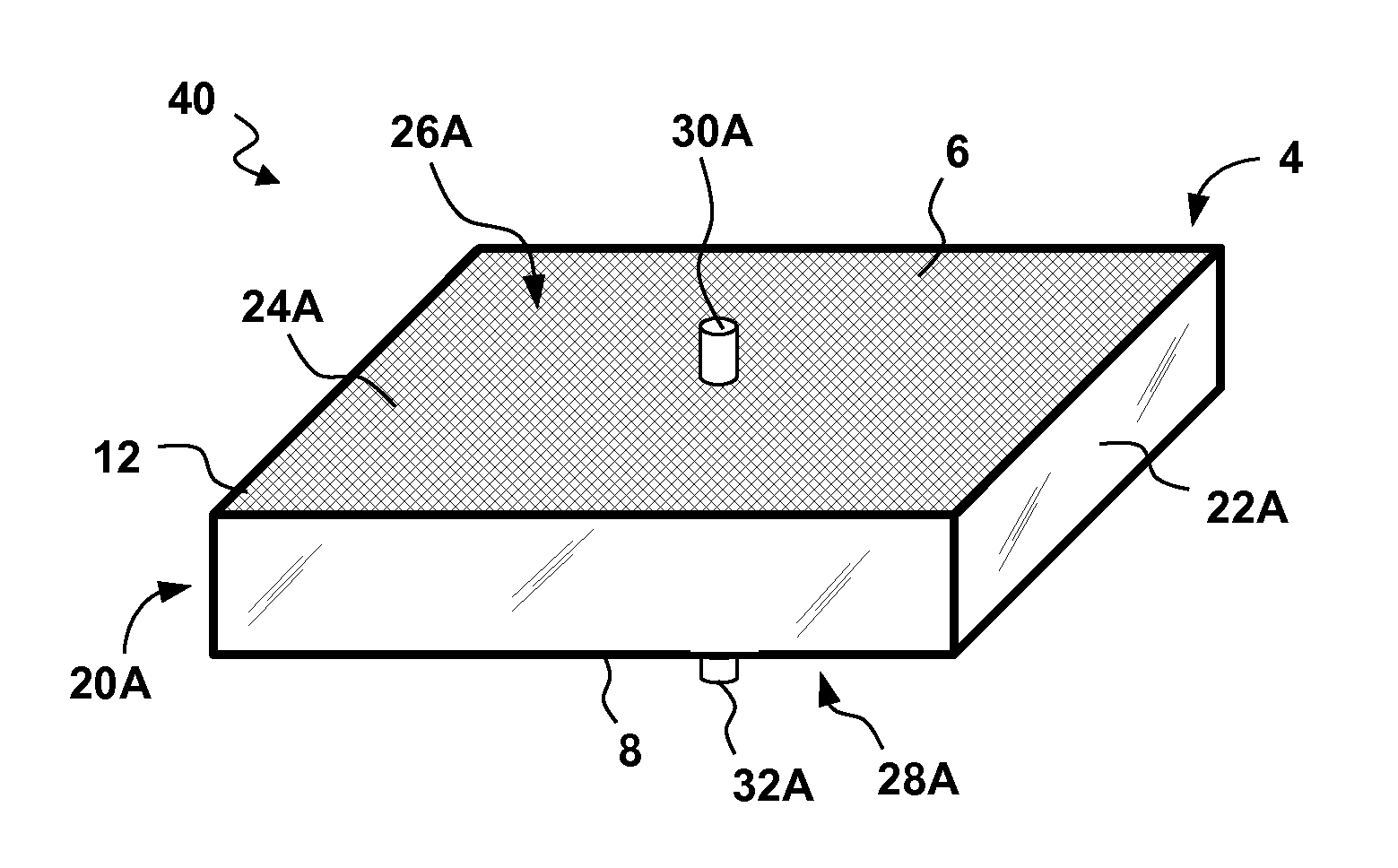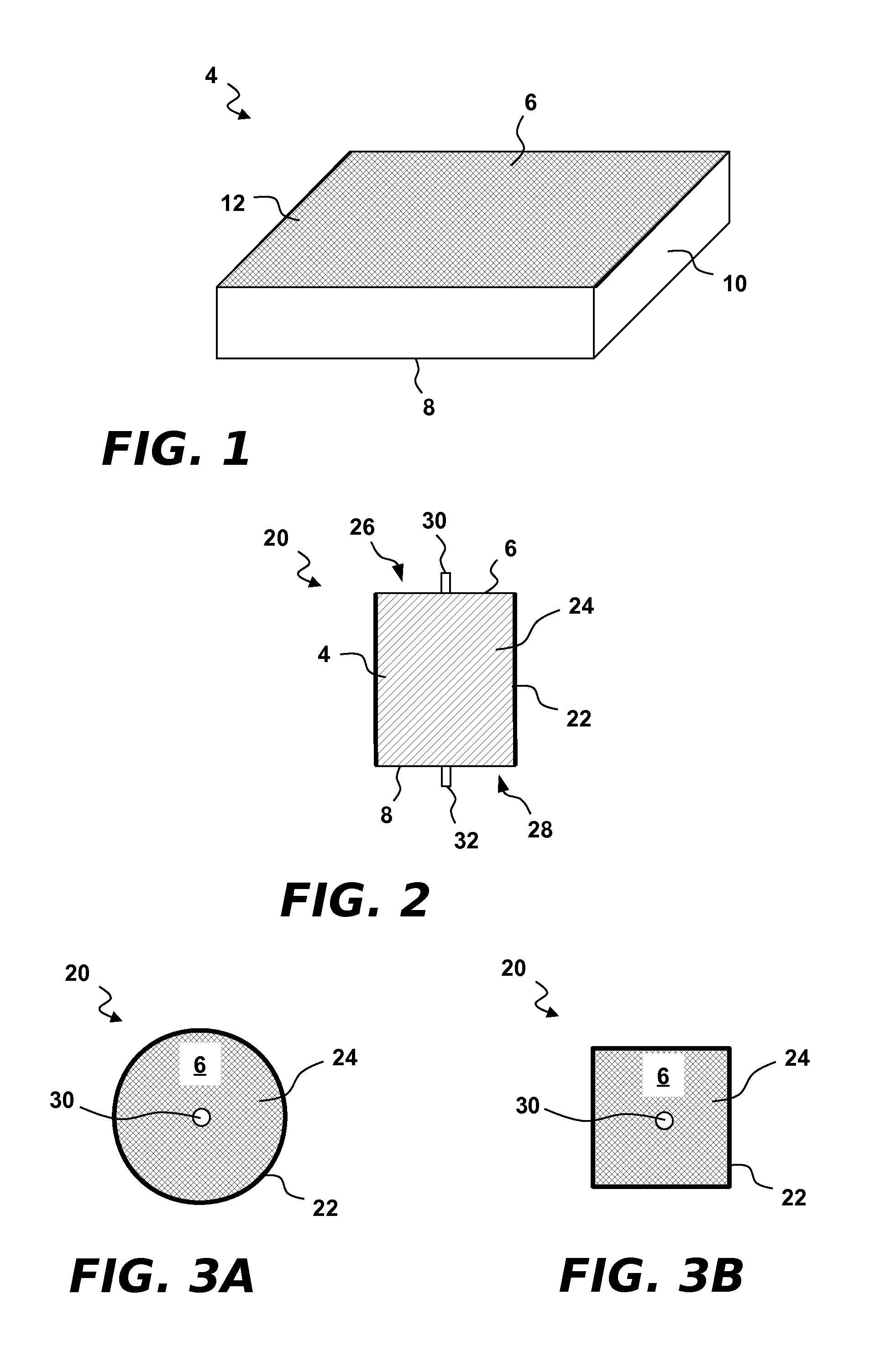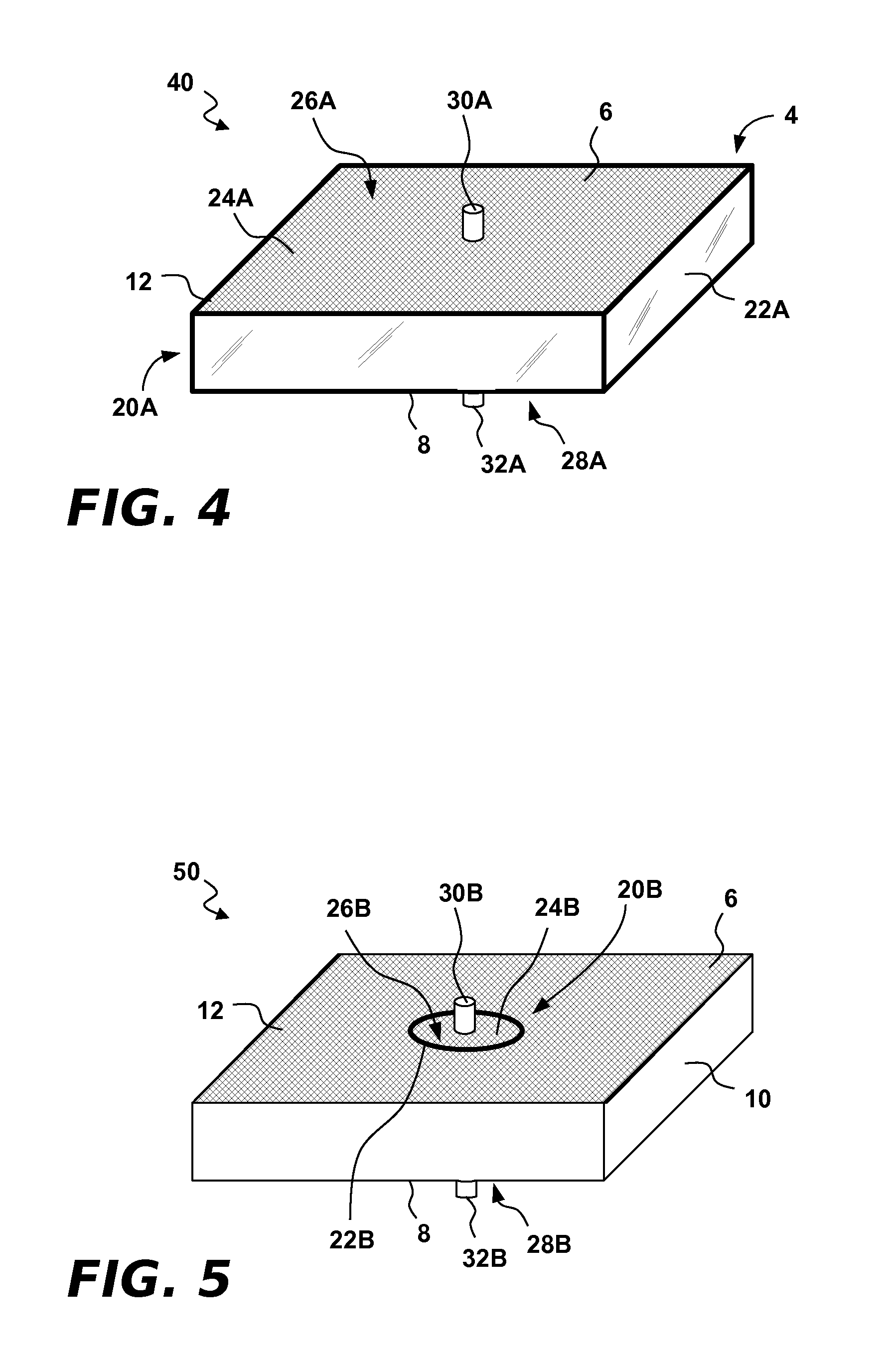Semiconductor Through-Wafer Electrical Signal-Carrying Waveguide
- Summary
- Abstract
- Description
- Claims
- Application Information
AI Technical Summary
Benefits of technology
Problems solved by technology
Method used
Image
Examples
first example embodiment
[0020]Turning now to FIG. 4, an apparatus 40 with through-wafer electrical signal communication capability is shown. The apparatus 40 is constructed from the semiconductor substrate 4 of FIG. 1 and further includes the waveguide 20 of FIG. 2 embodied as a real waveguide 20A. The real waveguide 20A includes a real waveguide boundary structure 22A formed by an electrically conductive material that surrounds the semiconductor peripheral edge 10. For example, the electrically conductive material may comprise an electrically conductive (e.g., metal) sleeve in which the semiconductor substrate 4 is situated. The conductive sleeve may either short the substrate peripheral edge 10 or an insulation layer could be added to electrically isolate the semiconductor substrate 4 from the conductive sleeve. Alternatively, the electrically conductive material may comprise an electrically conductive (e.g., metallization) coating applied to the substrate peripheral edge 10, or to an insulation layer su...
second example embodiment
[0023]Turning now to FIGS. 5-7, another apparatus 50 with through-wafer electrical signal communication capability is shown. The apparatus 50 is constructed from the semiconductor substrate 4 of FIG. 1 and further includes the waveguide 20 of FIG. 2 embodied as a virtual waveguide 20B. The virtual waveguide 20B includes a virtual waveguide boundary structure 22B surrounding a virtual waveguide interior region 24B. The virtual waveguide boundary structure 22B is formed by an electrically conductive region of the semiconductor substrate 4. This region comprises free semiconductor charge carriers that have been excited into a conduction band by incident light 52 emitted by a light source 54 (see FIG. 7). The incident light 52 changes the index of refraction within the electrically conductive region of the semiconductor substrate 4 (relative to the electromagnetic signal being propagated). This produces a dielectric waveguide whose wave containment properties are determined by the index...
third example embodiment
[0032]Turning now to FIG. 8, another apparatus 60 with through-wafer electrical signal communication capability is shown. The apparatus 60 is constructed from the semiconductor substrate 4 of FIG. 1 and further includes a virtual coaxial waveguide 20C designed for TEM mode signal propagation. The virtual coaxial waveguide 20C may be formed using the same technique used to make the virtual waveguide 20B of FIGS. 5-7. In this embodiment, a shaping pattern (not shown) patterns the incident light (not shown) to form an inner virtual propagation medium 22C-1 disposed within an outer virtual waveguide structure 22C-2. A separation region 24C of selected size lies between these two electrically conductive structures.
[0033]The remaining components of the virtual coaxial waveguide 20C are as described above in connection with FIG. 2, as shown by the use of corresponding reference numbers appended with the letter “C.” Thus, in addition to the inner waveguide propagation medium 22C-1 and the o...
PUM
 Login to View More
Login to View More Abstract
Description
Claims
Application Information
 Login to View More
Login to View More - R&D
- Intellectual Property
- Life Sciences
- Materials
- Tech Scout
- Unparalleled Data Quality
- Higher Quality Content
- 60% Fewer Hallucinations
Browse by: Latest US Patents, China's latest patents, Technical Efficacy Thesaurus, Application Domain, Technology Topic, Popular Technical Reports.
© 2025 PatSnap. All rights reserved.Legal|Privacy policy|Modern Slavery Act Transparency Statement|Sitemap|About US| Contact US: help@patsnap.com



